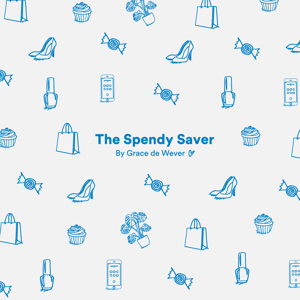You’re back! … fantastic. But if you are just tuning in now, here is a link to the first chapter.
After getting so far into debt, how did I get back on the savings track? Using the simplest money management tool out there. An excel spreadsheet.
The previous chapter detailed how easy it was for me to get into debt. Phew, that was a tough one to look back on, but also a great reminder of how far I’ve come!
So now I’m going to focus on how I got out of debt – this is something I’m really proud of… it wasn’t easy, but I got there.
Fast forward to my mid 20’s. I’d been dating my partner Jordy for a few years and we were beginning to think about our next steps. Our friends were at that stage that they weren’t just saving for the sake of it, they were saving for a goal.
Goal setting
Being around our friends who were saving for a goal – we quickly wanted to be a part of this. We decided to set ourselves a really big goal – to start saving towards our first home. We thought if we wanted to save, we better do some research. At this time, we both were employed in the Financial Services industry so knew a bit about what we needed to do – just actually doing it was the hard part!
We found out that the average house price in our area was $620,000 and that most banks require a 20% deposit to assist with the home loan, so we knew at the very minimum, we would need to save $124,000.
This seemed like a huge amount of money and honestly it felt like we would never reach this goal. Then, I remembered that there was two of us and we could both use our KiwiSaver savings towards our first home deposit. Plus, of course, any additional savings we had or would save. When I broke it down like this, it seemed more achievable.
Spending lockdown
Jordy and I sat down together and came up with a savings plan. We recorded all our expenses and worked out how much we would need to save to be able to purchase our first home in the next few years. Out of the two of us, I am definitely the spender! Jordy, fortunately, is the saver.
I knew I would have to make big changes to the way I used my money.
Keeping it real
We created an excel sheet, which did all the calculations for us. We recorded down our incomes, all expenses and how much we expect to save.
I knew one way to save money would be to start bringing my lunch to work. A few people had suggested to me that I do a weekly shop and pack my lunch each morning, as this would have a great impact on my savings plan.
But those who know me know I am sucked in by my loaded wedges and energy drinks! This was my go-to lunch treat! (And why is it that junk food is usually cheaper than a nice healthy salad?!)
So, doing a weekly shop and packing lunches to save money wasn’t going to work for me. It was important for me when doing my budget that I always set aside money for lunches – as this was where a chunk of my pay would go.
You might be reading this thinking – “wait, what? – she’s on a budget and still buying lunch?”
Yup, I did! I think it’s important to use realistic figures and remember it’s okay to treat yourself every once in a while! I made sure I allocated money towards the things I enjoyed – like meeting my friends for hot chocolates, and of course, the occasional new pair of shoes! 😊
Being realistic meant I didn’t resent budgeting. I was continuing to achieve savings but I was doing it in a way that meant I wasn’t having to give up EVERYTHING…and if you’re wondering… yes, I still love loaded wedges…..!
Keep it simple
Budgeting doesn’t have to be restrictive, or hard work. Be realistic with your expenses, and factor in some spending on treats. Keep your eye on your savings goal and check in regularly to make sure you’re still on track.
Use a budgeting tool that makes it simple to track your income and spending. We used an excel spreadsheet, but if you’re after something even easier to use, check out mybudgetpal.
Ok. All this talk about food is making me hungry! I’m going to nip out to grab some loaded wedges (yum!).
Ciao!
